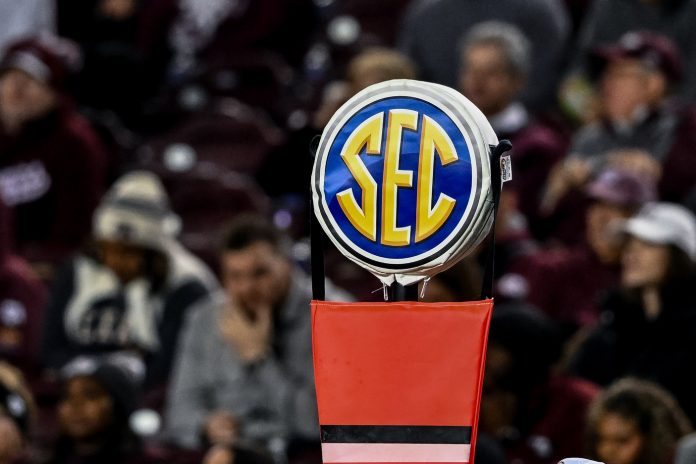SEC Media Days are underway in Dallas, Texas, but it’s what coaches said off the podium that has taken headlines by storm. Athlete revenue sharing is coming — that much we know. But there’s also a monetary figure SEC coaches are preparing for.
Potential SEC Money Plans Unveiled as Revenue Share Reality Nears
In May, the NCAA and Power Five conferences approved a $2.75 billion settlement for antitrust lawsuits, most notably the House V. NCAA class action. At the same time, they agreed to a revenue-sharing model that would pay student-athletes 22% of athletic department revenue beginning in 2025.
That is expected to amount to over $20 million per school, with the cap rising as revenue does. Universities will be allowed to distribute the money among their sports programs as they see fit, and scholarship limits will be replaced by roster restrictions — SEC coaches believe rosters will balloon to 105 players, which would be 20 more scholarships than the currently allotted maximum of 85 in the NCAA.
How much of the $20 million will football programs receive?
“Do the math,” Florida head coach Billy Napier told Yahoo Sports. “We’re talking $20 million (in allotted revenue sharing). In most athletic departments, football is 70-75% of the revenue. That’s $12.5-15 million. That’s the number we anticipate.”
LSU head coach Brian Kelly gave a slightly higher range at $14-17 million and stated that “Everybody in the SEC” will be able to afford the price tag. But that’s only the official revenue-sharing budget.
At Big 12 Media Days, Texas Tech head coach Joey McGuire went on a quick rant about how the SEC and Big Ten are selling revenue sharing to recruits.
“They’re not using facts. The fact of the revenue sharing is we’re all going to share the same thing. Now, you got a choice on how much of that same thing you’re going to share. We’re going to share at the max level. … If it’s $20 million for the Big 12, it’s $20 million for the SEC and $20 million for the Big Ten. I always remind recruits, ‘If a coach is going to tell you that, he’s not telling you the truth. So do you really want to go play for that guy?'”
Yet, McGuire is forgetting one thing: NIL.
Yahoo’s Ross Dellenger said many of the SEC coaches he spoke with expect booster-led NIL collectives to continue as a “sweetener” on top of the revenue sharing. That’s where bigger programs will maintain their edge on the competition and is likely what the SEC and Big Ten coaches are selling to recruits.
In the 2022-23 fiscal year, the Big Ten ($879.9 million) and SEC ($852.6 million) generated over $150 million more in revenue than the other three Power Five conferences:
- ACC: $707 million
- Pac-12: $603.9 million
- Big 12: $510.7 million
The per-school distributions showed a better picture of the gaps between programs as well as why the Pac-12 is now down to two members:
- Big Ten: $59.7 million
- SEC: $51 million
- Big 12: $46 million
- ACC: $45.1 million
- Pac-12: $33.6 million
KEEP READING: 2024 SEC Power Rankings
As the revenue-sharing model nears its official introduction, SEC coaches are not only preparing for its financial implications but also leveraging it as a powerful recruiting tool, setting the stage for a new era in college athletics.
College Football Network has you covered with the latest news and analysis, rankings, transfer portal information, top 10 returning players, the 2024 college football season schedule, and much more!


